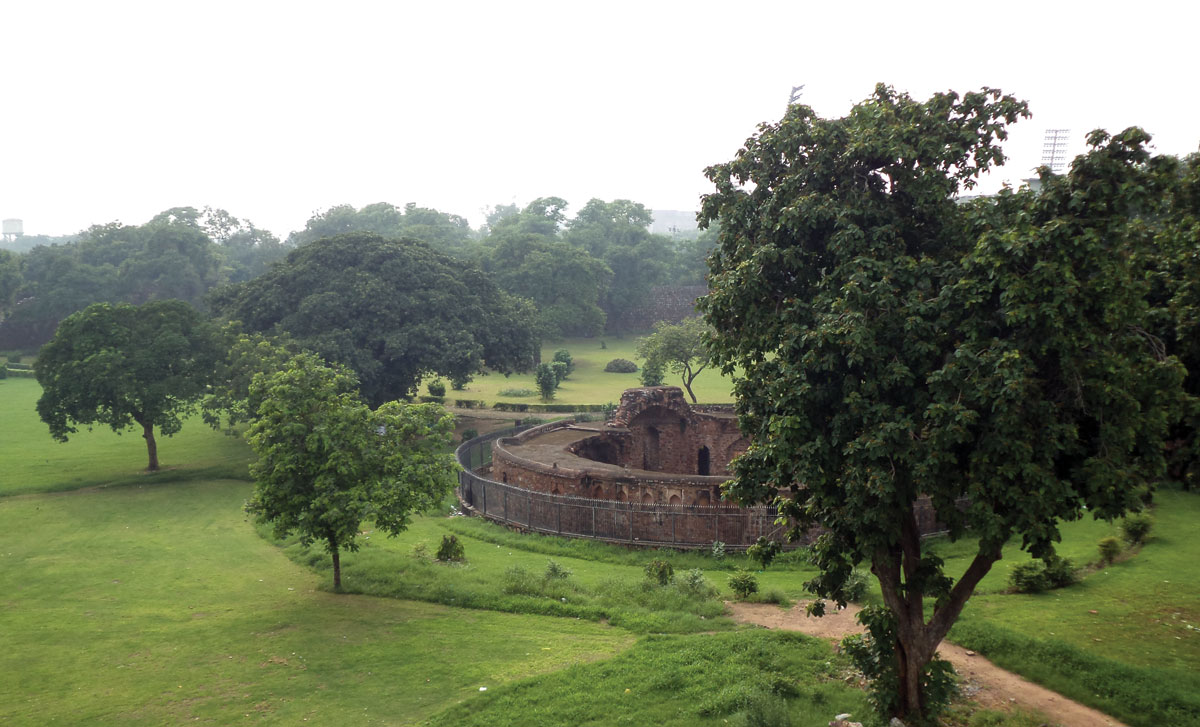KEEPING UP WITH THE ARBOREAL
Baoli at Feroz Shah Kotla in Delhi.
It is an indisputable fact that saving trees is the key to saving lives. But in reality conserving the environment is becoming an ever increasing, insurmountable task. For the past few decades India’s green cover is undergoing steady erosion. Even in the case of its national capital, Delhi, the same story stands in application, writes Priyanka Bhardwaj.
Delhi is known to be bathed with the colors of flower blossoms at various times of the year, with golden yellow Amaltas, orange Nasturtiums, fiery red Palash, fragrant white Frangipani; red, pink and mauve Bombax Blooms, red and purple Violas, white stock flowers, blue and purple Asters, red Petunias and multi colored Dog flowers, all adding up to its majestic tree avenues especially in Lutyens’ Delhi.
However the Economic Survey 2014-15 indicates that in 2013 just about 297.81 sq.km. of its tree cover was left and which made for 20.08% of the total area. Yet tree censuses have never been conducted officially but by private resident welfare associations (RWAs).
In 2011-12 the RWA of Sarvodaya Enclave first itemized tree count, individual health and species of the trees.
Soon more localities in South Delhi followed up with identical exercises.
The results were findings about the extent of damage caused by negligence and other agents such as lopping of branches of the trees, hammering of rods and nails in tree trunks, pest infestation and concretization around bases of trees.
Evidently the Delhi Government’s ruling of 1994 that calls for penal action against concretization of trees for about 6 feet from their bases appears to have had no effect in curtailing the problem.
Other initiatives to restore native trees are collaborative efforts of “Conservation Education Centre of Delhi” with “Delhi, I Love You” (a 30-month long social movement started by a group of friends who share their love for the city) and a “Delhi Seed Bank Project” to plant saplings of 22 native trees in a 3-acre plot in Asola Forest.
The latter project that is being administered by none other than film maker Pradip Krishen, also the author of “Trees of Delhi” holds much promise as he plans to undertake plantation based on the city’s mosaic of micro-habitats are identified for the suitability for a particular tree species.

The state government has acted somewhat in discouraging felling of trees by hiking the security deposit for cutting down trees and the compensation cost for the loss of greenery under the Delhi Preservation of Trees Act, 1994.
For every tree that is cut a security deposit of Rs. 34,500 instead of the erstwhile figure of Rs. 28,000 needs to be paid, and for compensatory plantation Rs. 15,000 is to be refunded.
For commercial projects, the rates for tree-cutting are on the higher side, Rs. 57,000 for each tree and a refundable component of Rs. 25,000 for ensuring compensatory plantation by the project authority.
The current AAP government at Delhi is said to be dwelling on raising the amount further.
While the above may be true the city government has not shied away from issuing contrary orders in the name of “public interest.”
Recently it called for removal of trees from 46 hectares of land for the redevelopment of Delhi Development Authority’s 18-hole Qutub Golf Course at Lado Sarai.
This is not an exceptional case as in 2013-14 and 2014-15 the number of trees felled for various development projects were 8,196 and 6,058 respectively.
As the city is left with very few of the 26 notified forests, the High Court has come down heavily on the Delhi government, Public Works Department, DDA, Delhi Metro Rail Corporation and Army, and sought immediate enquires on the number of trees cut and number of trees planted in various areas.
In the posh southern suburban areas in Gurgaon too, the awareness to conserve trees is on the upward swing as non-governmental organizations like NGO Haryali have urged the National Green Tribunal and Municipal Corporation of Gurgaon to ensure removal of “encroachments choking trees” that crop up when roads, parking spaces or sidewalks are built.
There have been mass plantation drives, one of them being spearheaded by the “Art of Living” foundation, for planting more than 2,000 trees across various sectors.
The necessity of green spaces in promoting mental and physical health and climate cannot be established more and the value of the trees to environment is a symbiotic one.
Statistics reveal that in the last decade more than 35,000 people have been reported dead due to acute respiratory infections across the country.
These were some of the figures quoted by the Union Environment Ministry that normally contests connections between air pollution and respiratory health.
Environment Minister, Prakash Javadekar in his response to members of the Upper House of Parliament said, “Air pollution is known to be one of the aggravating factors for many respiratory ailments and cardiovascular diseases like asthma, chronic obstructive pulmonary disease, chronic bronchitis etc.”
At the 69th Independence Day celebrations as well he elucidated that “jan bhagidari” or people’s participation and a “consultative and cooperative” approach, as also referred to in Prime Minister, Narendra Modi’s speech from the ramparts of the Red Fort, would be employed towards the central government’s aim of a “Clean India, Green India.”
Considering the uncertainty attached to the greenery of Delhi and no official redressal mechanism in place, the only way forward can be supporting more and more local drives.


